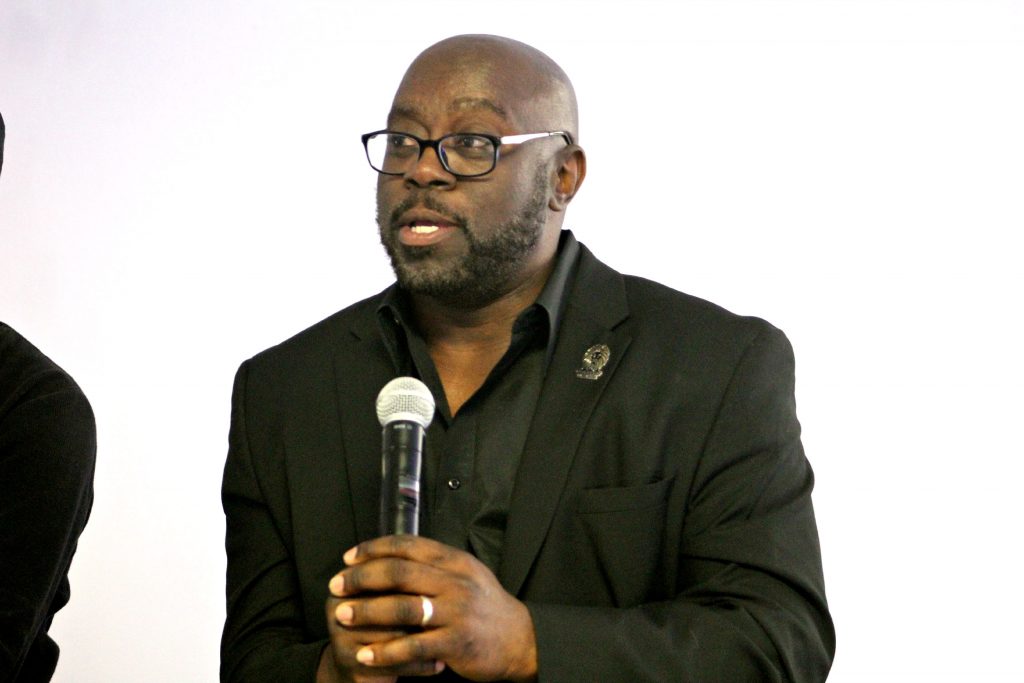The Black Archives History & Research Foundation of South Florida is a photographic and manuscript archival research repository dedicated to documenting the history of people of the African Diaspora in Miami-Dade County from 1896 to the present. Check out our interview with Timothy A. Barber, Executive Director of Black Archives, where he speaks about his background and the Black Archives.
What is your backstory?
I am Miami native and a graduate of Miami Central Sr. High School. I earned an Associates of Science in Electronic Engineering Technology from Bauder College and my Bachelor of Arts in English from Florida A&M University. I earned a Masters in History from Florida A&M University, as well. I am a proud member of Kappa Alpha Psi Fraternity, Inc.; Kappa Kappa Psi National Honorary Band Fraternity, Inc.; Society of American Archivists; and the Association of African American Museums. I have been the Executive Director of the Black Archives History & Research Foundation of South Florida since August of 2009. I started an intern there in 2003, later hired as the assistant archivist and then archivist/curator.
As director, I have been motivated by the desire to challenge pre-conceived ideas about the Black Archives and the rich history of the surrounding urban black communities. It was meeting Dr. Dorothy Jenkins Fields, who is the founder of the Black Archives, which sparked this motivation. It has been out of respect for her work and the history of these overlooked communities that has driven me to succeed as a member of this organization. Under the direction of our Board of Directors and my leadership, the Black Archives has become one of the leading black cultural institutions in South Florida, through signature arts, culture, and educational programming.

How do you explain to those in the community what the archives are?
An archive is a repository that retains and preserves the cultural identity of a person, place, thing, community, etc. We have coined a phrase called community archives, which is a break away from what people would consider the norm for institutions like ours. We preserve and maintain the history of a people and a place that initially wasn’t deemed valuable enough to document. We collect a plethora of manuscripts, photographs, and personal memorabilia of families, people, and things that in some instances at first glance doesn’t tell the story of that we have grown accustomed to hearing. This is what we are charged to do here at the archives, ensure that those stories will be kept for years to come.
What area of history do you enjoy studying the most?
I really enjoy the post-reconstruction and civil rights era. It is in these eras that I find the most repetition of life. I was once asked the common rhetoric “If you don’t know where you come from, you will never know what? Most people will say, “You will never know where you are going,” but the common thread is that “You will never know when THEY are trying to take you back!” I find that these moments in history cross-reference to modern history, where there is nothing new under the sun. It’s baffling how we at times repeat history, and will continue this as the norm, until we understand, study, and learn from it.
How is our understanding of history shaped by archives?
The archives don’t interpret the history, we merely preserve and make it available. If we begin interpreting the narrative, we only will shape it based on our ideals. The best and most rewarding experience is when researchers are able to put their hands on historical documentation and shape their individual ideas, based on the facts that we house.
What’s the most interesting artifact and/or collection has the Black Archives worked with?
The Black Archives contains so many interesting documents of Black history. I find that when I take the time to delve into a collection, I can lose hours just looking through old pictures and letters, learning about those people of African descent who built this city.
The most interesting for me is the burnt cross. This cross was burnt on the lawn of a church circa 1949 to intimidate the church sending a black rector to a white congregation. Many may be surprised that you would see such terrible racial undertones in Miami because Miami is “south,” but not really “south,” as many would say. This artifact is cemented in the history of Miami, that regardless, Miami was “south” too.
Learn more about The Black Archives, History and Research Foundation of South Florida, Inc.



